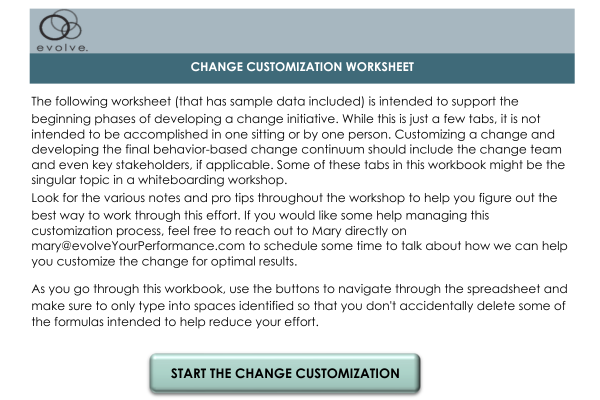Introduction
When we talk about organizations, we’re fundamentally talking about people — individuals united by a shared mission. In any business setting, it’s the behaviors of these individuals that weave the fabric of culture, influence productivity, and directly impact profitability. For a leader, recognizing the core importance of behaviors in shaping outcomes offers a pragmatic approach to driving organizational change. Instead of simply aligning beliefs or attitudes, focusing on observable and measurable behaviors provides a clear path to cultivating a culture that thrives on adaptability, innovation, and shared success.
Why should we be leveraging behaviors for organizational change? Because they are the building blocks of culture and performance. While attitudes and beliefs may be influential, they often remain intangible and difficult to measure. It is hard to change the hearts and minds of the workforce. However, if you can drive the ideal behaviors through structure and incentives, hearts and minds will follow in their own time. Observable behaviors offer concrete, quantifiable insights. In change management, focusing on specific actions — from collaboration and innovation to accountability and customer service — provides leaders with a clear and realistic roadmap for transformation.
Structuration theory offers a lens to understand this concept better. Developed by sociologist Anthony Giddens, it explains how organizational structures and individual behaviors influence each other. Put simply, the environment in which people operate shapes the way they behave, and these behaviors, in turn, influence and reinforce the organizational environment. We don’t want to get too academic, but we will talk about a real-life example that will illustrate how powerful it can be to leverage the structure to reinforce the ideal behaviors you are trying to drive.
 We have created the EVOLVE Change Customization Worksheet to build on this understanding. It offers change leaders a structured approach to identifying, incentivizing, and implementing desired behaviors. With a focus on practicality, the worksheet is designed to help you think through every stage of the change journey.
We have created the EVOLVE Change Customization Worksheet to build on this understanding. It offers change leaders a structured approach to identifying, incentivizing, and implementing desired behaviors. With a focus on practicality, the worksheet is designed to help you think through every stage of the change journey.
In this blog post, we will illustrate how a structured approach like the EVOLVE Change Customization Worksheet can help leaders design strategic incentives, craft compelling communication plans, and inspire their organizations to embrace new behaviors. Whether you’re tackling resistance to change or looking to sustain newly adopted practices, this tool can be the key to unlocking the full potential of your transformation efforts.
Change is never easy, but with a focus on behaviors and the right strategies, you can empower your team to embrace and thrive in any transformation. Join us as we explore how to leverage the power of the EVOLVE Change Customization Worksheet to drive behavioral change and deliver a lasting impact.
The Significance of Behaviors in Change Management
Change management often falters because organizations focus too heavily on altering attitudes and beliefs instead of honing in on the specific, observable behaviors that can make or break their transformation efforts. Trying to change hearts and minds directly can feel like swimming upstream: it’s abstract, unpredictable, and often resistant to outside influence. We’ve all been there: a grand vision is announced from the top down, only to be met with resistance or half-hearted implementation as people cling to familiar patterns. But the truth is that when we focus too much on the emotional aspect, we risk losing the tangible progress that comes from shifting behaviors.
 Relying on the power of persuasion alone is fraught with pitfalls. When change leaders only emphasize the “why” of a transformation without taking time to get laser-focused on the desired “how,” they’re left with a perhaps inspired but directionless workforce. Think of an organization implementing a new customer-first initiative. A change leader can host countless town hall meetings on the importance of a customer-centric culture. Still, without concrete guidelines on what customer-first behaviors should look like — faster response times, proactive client follow-ups, or more personalized communication — employees may feel motivated but unsure of how to act on those motivations. This leads to an organization-wide gap between aspiration and execution, with the workforce left floating in uncertainty.
Relying on the power of persuasion alone is fraught with pitfalls. When change leaders only emphasize the “why” of a transformation without taking time to get laser-focused on the desired “how,” they’re left with a perhaps inspired but directionless workforce. Think of an organization implementing a new customer-first initiative. A change leader can host countless town hall meetings on the importance of a customer-centric culture. Still, without concrete guidelines on what customer-first behaviors should look like — faster response times, proactive client follow-ups, or more personalized communication — employees may feel motivated but unsure of how to act on those motivations. This leads to an organization-wide gap between aspiration and execution, with the workforce left floating in uncertainty.
Defining the observable, measurable behaviors that define success can bridge that gap. By pinpointing the specific actions that embody change and creating structures that incentivize those actions, leaders can create a clear roadmap for transformation. Focusing on behaviors removes ambiguity, offering a concrete framework to build new habits around. When desired actions are clearly defined, they can be measured, tracked, and encouraged, creating a positive feedback loop that reinforces change over time.
For instance, let’s consider a team aiming to boost cross-functional collaboration. Rather than just advocating for “better collaboration,” leaders can define the desired behaviors: regular inter-departmental meetings, shared progress tracking, or transparent resource allocation. Once these behaviors are defined and incentivized through recognition programs or new workflows, the collaboration will naturally strengthen as teams internalize these new ways of working and the organization’s systems reinforce the benefits of these new, desired behaviors.
Change is tough, but by taking the time to define the ideal behaviors, it becomes attainable. By shifting focus from abstract attitudes to measurable behaviors, leaders can cut through resistance and guide their teams toward sustainable change.
The key to building an organizational system where the ideal behaviors aren’t just encouraged — they’re reinforced, celebrated, and woven into the organizational culture. That’s where the real magic happens.
Structuration Theory: A Practical Illustration
Structuration theory, developed by sociologist Anthony Giddens, provides a valuable framework for understanding how structures within organizations influence individual behaviors and vice versa. This interaction between structure and behavior can be elegantly illustrated through a common scenario: the setup of a public restroom.
 Consider the behavior we want to encourage: using a paper towel to open the restroom door after washing hands to minimize germ transmission. The success of this behavior depends heavily on how the restroom is structured. Typically, paper towel dispensers and trash bins are placed near the sinks. This setup facilitates the washing and drying of hands but does not encourage the use of the paper towel to open the door, as there is no nearby place to dispose of the paper towel after its final use. Consequently, even well-intentioned individuals may skip using the paper towel to open the door because the ideal behavior requires an inconvenient, additional effort due to the absence of a strategically placed trash bin near the door.
Consider the behavior we want to encourage: using a paper towel to open the restroom door after washing hands to minimize germ transmission. The success of this behavior depends heavily on how the restroom is structured. Typically, paper towel dispensers and trash bins are placed near the sinks. This setup facilitates the washing and drying of hands but does not encourage the use of the paper towel to open the door, as there is no nearby place to dispose of the paper towel after its final use. Consequently, even well-intentioned individuals may skip using the paper towel to open the door because the ideal behavior requires an inconvenient, additional effort due to the absence of a strategically placed trash bin near the door.
The practical application of structuration theory is seen when an observant individual moves the trash bin closer to the door, modifying the environment to better support the desired behavior. This small adjustment makes it easier for subsequent users to perform the ideal behavior effortlessly—using the paper towel to open the door and then discarding it conveniently in the nearby bin. If this new placement of the trash bin is consistently reinforced by other system users, such as cleaning staff who recognize and maintain the improved setup, the change can become an integrated part of the restroom’s structure.
However, the real test of structuration theory in practice comes from the system’s response to these individual modifications. For example, if the cleaning staff has been trained to ensure that all elements in the restroom, including the trash can, are returned to specific, predefined positions after cleaning, the thoughtful adjustment made by the user could be undone. This reversion results from a system that incentivizes maintaining the status quo rather than adapting to enhancements. Consequently, the ideal behavior—using a paper towel to avoid touching the door handle directly—remains reliant on individual effort, and the structural support necessary for its normalization is lost.
Can you see how Structuration Theory might be useful in an organization system as it identifies the need to change? The bathroom example underscores the importance of helping leaders think through how structures within their organizations can be adapted to support desired behaviors. If an organization really wants to institutionalize new behaviors, leaders must identify critical behaviors, assess the current structural elements like incentives and resource placements, and design a strategy for sustainable behavioral change. By evaluating and adjusting these structures, organizations can create environments where desired behaviors are not only encouraged but become the natural course of action.
In the next section, we will explore in detail how the EVOLVE Change Customization Worksheet can be applied to systematically implement and sustain these behavioral changes. By aligning structures with desired behaviors, leaders can ensure that changes are not merely temporary adaptations but evolve into lasting features of organizational life. This approach not only simplifies the process of change but also embeds new practices deeply within the organization’s culture, making the ideal behaviors the path of least resistance and the most natural outcome.
Step-by-Step Guide to Customizing Your Organizational Change
Effective organizational change hinges on a clear understanding of desired outcomes, particularly in terms of behaviors. The EVOLVE Change Customization Worksheet provides a structured approach to this process, leveraging structuration theory to align organizational structures with new, targeted behaviors. Let’s explore the five critical steps of this approach, using real-world applications and practical examples to illustrate each step.
The first step in any structured change initiative is to clearly identify the behaviors that align with the organization’s strategic goals. This involves pinpointing specific actions that employees need to adopt to drive the organization forward. For example, if a company aims to enhance customer satisfaction, desired behaviors might include promptly responding to customer inquiries and proactive communication.
The worksheet helps leaders systematically think through and list these behaviors, ensuring they are observable, measurable, and directly tied to the organization’s overarching objectives. This clarity is crucial because it sets the foundation for all subsequent change efforts, ensuring that every step contributes directly to the desired outcomes.
Once desired behaviors are identified, the next step is to assess and adjust the incentives that drive these behaviors. This involves a critical look at existing incentives and how they might be realigned to support the new behaviors. The worksheet facilitates this by providing tools to map out current incentive structures and suggest modifications.
For instance, if a company finds that its bonus system rewards individual accomplishments over team success, but the goal is to enhance team collaboration, the incentive system may need to be revised to reward team achievements instead. This adjustment ensures that incentives are in harmony with the desired behaviors, making it easier for employees to adopt and sustain these behaviors.
After the planning and assessing, comes implementation. Implementation is where the planned changes are put into action. The worksheet offers guidance on how to roll out these changes effectively, along with tools to measure their impact on behavior. This step often involves setting up new protocols, training programs, and feedback systems to support the adoption of the new behaviors.
For example, if a company wants to promote a culture of continuous improvement, it might implement regular training sessions and establish a feedback loop where employees can share their improvement suggestions. The success of these initiatives can then be measured by the increase in suggestions implemented or improvements made over time.
Next, effective communication is vital throughout the change process. The worksheet emphasizes the importance of transparent communication to ensure that everyone in the organization understands the reasons behind the change, the benefits, and how these changes affect them on a daily basis. Effective communication strategies help build buy-in and engagement among all stakeholders.
An example of this could be a monthly newsletter detailing the progress of the change initiatives, combined with regular town hall meetings where employees can ask questions and express concerns, or a change agent network with representatives from every office vertical, ensuring everyone feels informed and involved.
Finally, self-efficacy, or the belief in one’s ability to succeed in specific situations or accomplish a task, is crucial for embedding lasting change. It empowers employees to embrace new challenges and adapt to change confidently. This step is about strengthening the organization’s capacity for ongoing change and ensuring that individuals feel capable and motivated to contribute to transformation efforts.
To build self-efficacy, the worksheet guides leaders through developing supportive structures that affirm and reinforce individual and team capabilities. This might include upskilling journeys specific to the change that equip employees with the ability to self-assess and develop the skills needed to succeed in the new environment, or mentoring systems that connect less experienced employees with seasoned colleagues. Additionally, recognizing and celebrating small wins is a powerful way to enhance self-efficacy. Each success builds the individual’s belief that they can influence their environment and outcomes positively.
For example, if an organization is transitioning to a new digital tool, building self-efficacy could involve comprehensive training sessions coupled with access to ongoing support and resources. Leaders might set up a recognition program that acknowledges those who have effectively adopted the tool in their daily work. Furthermore, creating opportunities for employees to share their successes and learning experiences with the tool can reinforce their sense of efficacy.
Building self-efficacy not only helps embed the immediate changes but also cultivates an organizational culture that is resilient and adaptive to future changes. It transforms the workforce from passive recipients of change to active participants who are competent and confident in their abilities to meet new challenges.
Focusing on building self-efficacy better equips organizations to face the inevitable challenges that arise with change. In the next section, we will explore how to navigate these challenges effectively, ensuring that behavioral changes are not only implemented but also sustainable and resilient under various conditions. By understanding common obstacles and learning strategies to overcome them, leaders can enhance their organization’s capacity for successful and continuous transformation.
Navigating Challenges
Change, especially at the organizational level, is rarely a smooth journey. It involves navigating through various challenges that can either serve as stumbling blocks or stepping stones, depending on how they are addressed. The EVOLVE Change Customization Worksheet not only anticipates these challenges but also equips leaders with strategies to overcome them effectively. By understanding that struggle and chaos often signal misalignments within the system, leaders can use these indicators as valuable clues for recalibration.
Challenges during a change initiative often point to areas where the organization’s current structures and the desired behaviors are not perfectly aligned. For example, if an organization is pushing for increased innovation but continues to reward only efficiency and risk aversion, the conflict between what is said and what is rewarded creates confusion and resistance among employees. The EVOLVE Worksheet helps by providing a framework to reassess and realign these elements, ensuring that the structure supports the new direction.
 Leadership plays a pivotal role in navigating these challenges. Leaders must not only champion the change but also remain deeply involved in its implementation. This includes maintaining an open line of communication and being receptive to feedback. Leaders should encourage a culture where feedback is seen as a constructive part of the growth process, not as criticism. By doing so, they can quickly identify pain points and areas of resistance that need immediate attention.
Leadership plays a pivotal role in navigating these challenges. Leaders must not only champion the change but also remain deeply involved in its implementation. This includes maintaining an open line of communication and being receptive to feedback. Leaders should encourage a culture where feedback is seen as a constructive part of the growth process, not as criticism. By doing so, they can quickly identify pain points and areas of resistance that need immediate attention.
An effective leader will use chaos and struggle as diagnostic tools. When a particular area of the organization experiences turmoil or confusion during a change, this disturbance is a clear indication that something is not working as intended. Leaders must then dig deeper to understand the root of the problem—whether it is a lack of resources, inadequate training, or conflicting incentives—and address these issues promptly and transparently.
Continuous feedback is crucial for the fine-tuning of any change process. It involves regularly collecting input from all levels of the organization and using that data to make informed adjustments. This ongoing loop of feedback and adjustment helps the organization to stay on course and corrects the trajectory as needed. The EVOLVE Worksheet facilitates this process by including tools that help leaders gather and analyze feedback effectively.
For instance, if a new policy intended to increase collaborative efforts is met with resistance, feedback mechanisms can help leaders understand whether the resistance is due to logistical challenges, a lack of clarity in roles, or perhaps interpersonal conflicts. Understanding the specific issues allows leaders to tailor their strategies more precisely and effectively address the root causes of the resistance.
It’s important to recognize that the ability to navigate and overcome challenges in change management is not just about correcting course; it’s about building a resilient organization that is capable of adapting to future changes. The strategies outlined in the EVOLVE Change Customization Worksheet empower organizations to turn potential setbacks into opportunities for learning and growth. This adaptive approach ensures that organizations not only survive the tumultuous process of change but also thrive in new and evolving landscapes, well-prepared for whatever challenges the future might hold.
Conclusion
As we’ve navigated through the complexities of organizational change in this blog post, a central theme has emerged: the pivotal role of behaviors in driving successful transformations. The traditional approach of attempting to change hearts and minds, though well-intentioned, often overlooks the practical necessity of altering observable and measurable behaviors. Without this focus, efforts to shift organizational culture and performance can quickly become mired in ambiguity and resistance.
The examples and discussions highlighted throughout this post underscore the significance of structuring change initiatives around specific behaviors that align with organizational goals. By identifying desired behaviors, assessing and adjusting incentives, implementing and measuring progress, fostering effective communication, and building self-efficacy, leaders can create a robust framework for sustainable change. Each of these steps, outlined through the EVOLVE Change Customization Worksheet, serves as a blueprint for turning theoretical concepts into actionable strategies.
However, as every seasoned leader knows, the path to change is rarely without its obstacles. Viewing struggle and chaos as indicators, rather than setbacks, can provide valuable insights into misalignments within the organizational system. Effective change leadership involves using these challenges as diagnostic tools to recalibrate strategies and structures continually. This proactive approach ensures that change is not only implemented but also ingrained within the organizational fabric.
For those ready to embark on or refine their change initiatives, the pitfalls of neglecting behavior-focused strategies serve as a stark reminder of what’s at stake. Attempting to drive change without a clear, behavior-centric plan risks diluting the impact of your efforts and can lead to disillusionment and wasted resources.
To avoid these common traps, I encourage leaders and change agents to leverage the power of the EVOLVE Change Customization Worksheet. This tool is designed not just to guide you through planning and implementation but also to help you sustain the momentum of change by continuously aligning organizational structures with the desired behaviors.
Embrace the challenge of change with the confidence that you have the tools and strategies to succeed. Download the EVOLVE Change Customization Worksheet today and begin the journey toward a more adaptable, innovative, and successful organization. For personalized support, contact Dr. Mary Barnes to ensure that your change initiatives are as effective and impactful as possible. Together, let’s turn your organization’s potential into reality.




